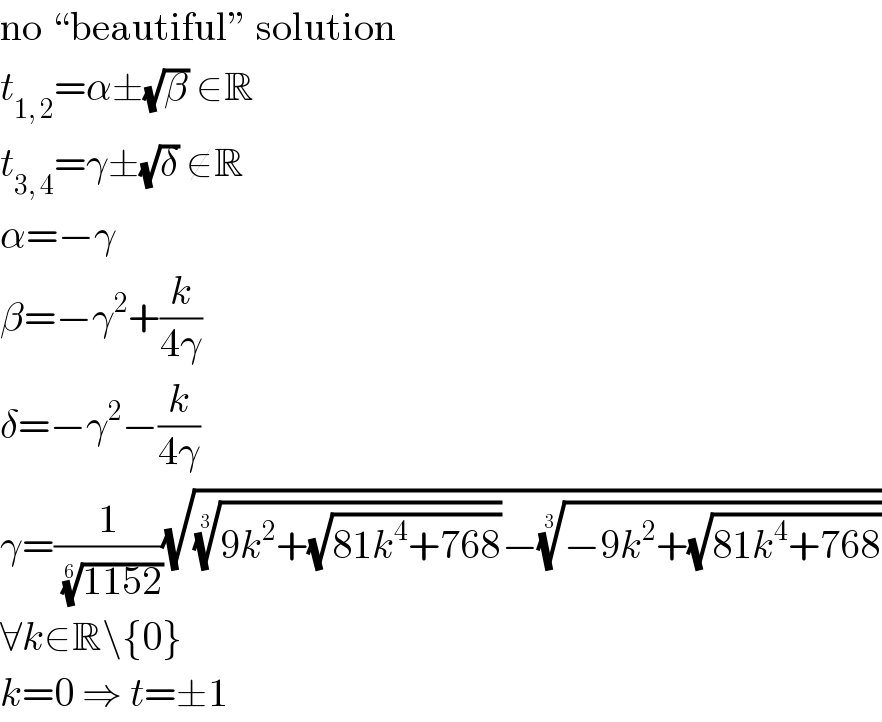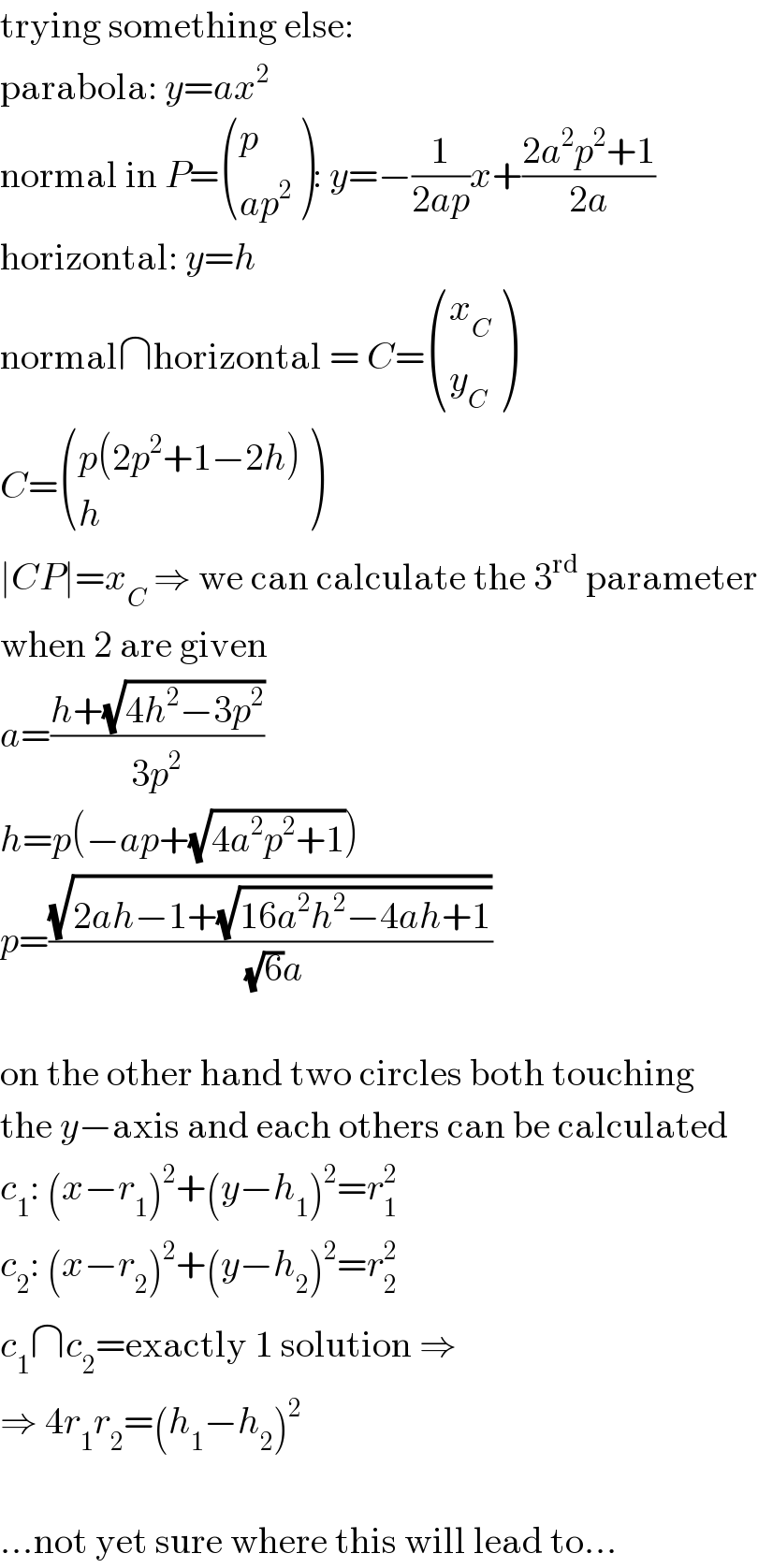
Question and Answers Forum
Question Number 53595 by ajfour last updated on 23/Jan/19

Commented by ajfour last updated on 24/Jan/19

Commented by ajfour last updated on 24/Jan/19

Commented by mr W last updated on 24/Jan/19

Commented by ajfour last updated on 24/Jan/19

Commented by mr W last updated on 24/Jan/19

Answered by ajfour last updated on 23/Jan/19

Commented by mr W last updated on 24/Jan/19
![A(R,h) y=cx^2 with c=1 y′=2cx x_P =R+R cos θ=R(1+cos θ) y_P =h−R sin θ=cx_P ^2 =cR^2 (1+cos θ)^2 ⇒h=R[sin θ+cR(1+cos θ)^2 ] y_P ′=2cR(1+cos θ)=(1/(tan θ)) ⇒tan θ+sin θ=(1/(2cR)) ...(i) B(r,k) ⇒k=r[sin φ+cr(1+cos φ)^2 ] ⇒tan φ+sin φ=(1/(2cr)) ...(ii) h−k=(√((R+r)^2 −(R−r)^2 ))=2(√(Rr)) ⇒R[sin θ+cR(1+cos θ)^2 ]−r[sin φ+cr(1+cos φ)^2 ]=2(√(Rr)) ...(iii) ...... 3 eqn. with 3 unknowns r,φ,θ from (i): tan θ+sin θ=(1/(2cR))=(4/k)⇒k=8cR with t=tan (θ/2) ((2t)/(1−t^2 ))+((2t)/(1+t^2 ))=(4/k) t^4 +kt−1=0 ⇒t=f(k)=.... from (ii): ⇒cr=(1/(2(tan φ+sin φ))) from (iii): ⇒((k[k+4t(1+t^2 )])/(8(1+t^2 )^2 ))−(1/(tan φ+sin φ))[sin φ+(((1+cos φ)^2 )/(2(tan φ+sin φ)))]=(√(k/(tan φ+sin φ))) ⇒φ=.....](Q53617.png)
Commented by ajfour last updated on 01/Feb/19

Commented by mr W last updated on 24/Jan/19

Commented by MJS last updated on 24/Jan/19

Commented by mr W last updated on 24/Jan/19

Commented by ajfour last updated on 24/Jan/19

Commented by MJS last updated on 24/Jan/19

Commented by MJS last updated on 24/Jan/19

